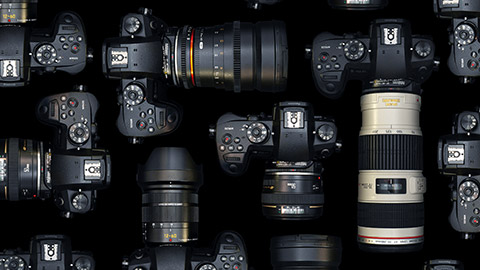Operating budgets determine the estimated profit or loss for the period.
Enhance your understanding of operating budgets by watching the following 3:46-minute video.
Service industries obtain revenue by providing services to their customers and clients, e.g. professional, personal, building, marketing, and transport services.
The different categories of expenses include:
- Marketing expenses: selling and marketing functions, e.g. sales salaries, commission, depreciation, advertising, running of motor vehicles.
- Financial expenses: the cost of financing the business, e.g. interest paid, borrowing costs, doubtful, and bad debts.
- Administration expenses: all other expenses, namely printing and stationery, other staff salaries, insurance, electricity, telecommunications, and rent.
The operating budgets for service industries consist of the revenue budget and all expense budgets, including marketing, administration, and financial expenses.
Example
Surrey Hills Accounting and Book-keeping Services are preparing revenue and expense budgets for the financial year ended 30 June.
The following information is provided:
| Estimated fees | $ 600,000 per annum |
| Rent | $ 8,000 per month |
| Bank charges | $ 500 per month |
| Advertising | $ 15,000 per annum |
| Interest paid | $ 1,000 per month |
| Stationery | $ 1,500 per month |
| Travelling expenses | $ 3,000 per month |
| Miscellaneous office expenses | $ 2,500 per month |
| Depreciation on office equipment | $ 10,500 per annum |
| Telecommunications | $ 2,500 per month |
| Total salaries | $ 12,500 per month |
- Workcover payments 3% of total salaries
- Superannuation 9% of total salaries
Example 2: Revenue and expense budgets
For the service industry, the following budgets may need to be prepared:
- Revenue
- Marketing expenses
- Financial expenses
- Administration expenses
- Income statement.
Examples:
Revenue budget
| Fees | $ 600,000 |
| Total | $ 600,000 |
Marketing expenses budget
| Advertising | $ 15,000 |
| Total | $ 15,000 |
Financial expenses budget
| Interest paid | $ 1,000 per month | $ 12,000 |
| Bank charges | $ 500 per month | $ 6,000 |
| Total | $ 18,000 |
Administration expenses budget
| Salaries | $ 12,500 per month | $ 150,000 |
| Depreciation of office equipment | $ 10,500 | |
| Miscellaneous office expenses | $ 2,500 per month | $ 30,000 |
| Rent | $ 8,000 per month | $ 96,000 |
| Stationery | $ 1,500 per month | $ 18,000 |
| Telecommunications | $ 2,500 per month | $ 30,000 |
| Travelling expenses | $ 3,000 per month | $ 36,000 |
| WorkCover | 3% of total salaries | $ 4,500 |
| Superannuation | 9% of total salaries | $ 13,500 |
| Total | $ 388,500$ 388,500 |
An income statement budget can also be prepared based on the revenue and expense budgets.
Income statement budget
| $ | $ | $ | |
|---|---|---|---|
| Fees | $600,000 | ||
| Less marketing expenses | |||
| Advertising | 15,000 | ||
| Total marketing expenses | 15,000 | ||
| Less financial expenses | |||
| Interest paid | 12,000 | ||
| Bank charges | 6,000 | ||
| Total financial expenses | 18,000 | ||
| Less Administration expenses | |||
| Salaries | 150,000 | ||
| Depreciation of office equipment | 10,500 | ||
| Miscellaneous office expenses | 30,000 | ||
| Rent | 96,000 | ||
| Stationery | 18,000 | ||
| Telecommunications | 30,000 | ||
| Travelling expenses | 36,000 | ||
| Workcover | 4,500 | ||
| Superannuation | 13,500 | ||
| Total administration expenses | 388,500 | ||
| Total expenses | $421,500 | ||
| Net profit before tax | $178,500 | ||
Trading industries include both retail and wholesale businesses. These businesses buy and sell goods to retailers and consumers, e.g. supermarkets, department stores, electrical stores and furniture stores. Therefore, as well as preparing marketing, financial and administration budgets, a trading business will also need to develop sales, purchase and a COGS budgets.
The format for a master budget for a trading business is set out below:1
Figure 2: Operating budgets for trading industries
Trading and manufacturing firms prepare sales budgets, which can be prepared by product, period, regional area or a combination. The sales figures in the ledger account should be shown exclusive of GST; therefore, GST is not included in the sales budget.
The following is an example of a sales budget prepared by-product
Example

Montgomery Aviation Supplies produces the following clothing and accessories for pilots, e.g. pilot shirts, jackets, sunglasses, and watches.
Estimated sales figures for the following year are 5,000 shirts, 4,000 jackets, 3,000 sunglasses, and 2,000 watches.
The sales budget for the following year is as follows:
| Product | Sales volume | Sale price | Sales $ |
|---|---|---|---|
| Pilot shirts | 5,000 | 34 | 170,000 |
| Pilot jackets | 4,000 | 100 | 400,000 |
| Sunglasses | 3,000 | 170 | 510,000 |
| Watches | 2,000 | 360 | 720,000 |
| 1,800,000 |
Example 3: Sales budgets looking forward
In the above example, estimated sales were based on previous figures and adjusted according to current market trends.
Sales can also be estimated based on previous figures and a change in market conditions, as demonstrated in the example below.
Example
Mitchell Evans imports and sells genuine Swiss alarm clocks. Mitchell’s sales for the previous year were 1,060. Due to an increase in the Australian dollar, Mitchell believes he can reduce the price of his products by 5% and estimates his sales will increase by 15%.
Total sales for previous year: 1,060 x $260 = $275,600
Estimated increase in sales: 1,060 x 1.15 =1,219
Reduced price per item: $260 x .95 = $247
The sales budget for the following year can be prepared as follows:2
| Sales | Cost | Total sales | |
|---|---|---|---|
| Alarm clocks | 1,219 | $247 | $301,093 |
Example 4: Sales budgets based on history
COGS relate to all costs directly attributed to purchasing or manufacturing goods that are then on-sold. This amount is then deducted from the total sales figure to determine the gross profit for the period.
Enhance your understanding by watching the following 2:17-minute video.
The following formula can be used to calculate the selling price, COGS, and mark-up % provided estimates are provided.
Selling price/COGS -1 = mark-up %
Example
If the selling price amounts to $350,000 and the COGS at $200,000 are known, the markup on cost can be estimated as follows:
$350,000/$200,000-1 = 75% (mark-up)
Alternatively, where the markup % and selling price are known, the COGS can be calculated as follows:
$350,000/1.75 = $200,000 (COGS)
If the COGS and mark-up on cost are known, the selling price can be calculated as follows:
$200,000 x (1 + 0.75) = $350,000 (selling price)
Example 5: COGS Budget
If sales estimates are given for the following year, and the mark-up on COGS is provided, COGS and gross profit can be estimated as follows:
Example
COGS budget
| Sales $ | Mark-up $ | Calculation $ | COGS $ | |
|---|---|---|---|---|
| Product A | 500,000 | 75% | 500,000/1.75 | 285,714 |
| Product B | 420,000 | 80% | 420,000/1.9 | 221,053 |
| Product C | 350,000 | 50% | 350,000/1.5 | 233,333 |
| Total | 1,270,000 | 740,100 |
Gross profit is calculated as follows:
| Sales | $1,270,000 |
| Fewer COGS | $740,100 |
| Gross Profit | $529,900 |
Example 6: COGS Budget and gross profit calculated
An alternative method can be used to calculate COGS by using the number of items sold.
Example

Metropolitan Scooters has sold 800 scooters in the financial year. Total sales were $240,000. The cost of each item was $300.
COGS = $300 x 800 = $240,0001
Example 7: COGS Budget based on numbers sold
The purchase budget is the estimated value of the purchases expense for the period.
The purchases budget will differ from the COGS budget as the purchase of goods may include opening and closing stock.
The COGS is usually presented in the income statement as:
Opening inventory + purchases – closing inventory = COGS
Purchases for the year can be estimated as follows:
Example

Kosta Cameras buys its inventory and marks it up by 70%. The business sold goods to the value of $550,000 in the last financial year. The opening stock was $45,000, and the closing stock was $22,000. What is the cost of purchases for that period?
COGS: $550,000/1.7 = $323,529
The closing inventory amount is less than the opening inventory. Therefore, some sales have come from the opening inventory and purchases made throughout the year
| $ | $ | |
|---|---|---|
| Sales | 550,000 | |
| Less COGS | ||
| Opening inventory | 45,000 | |
| Plus purchases | 300,529 | |
| Less closing inventory | 22,000 | 323,529 |
| Gross profit | $226,471 |
Purchases: ($323,529 + $22,000) - $45,000 = $300,529
Example 8: Purchases budget
Most trading businesses must maintain a minimum level of stock on hand to cover expected sales in the next period. Therefore, the purchases for the month must be sufficient to meet expected sales and maintain inventory levels for the next period.1
Using this method, the closing stock of one period becomes the opening stock for the following period.
Example
Kosta Cameras expects to sell 400 cameras in November and 700 in December. As a result, the business estimates that 20% of the stock will need to be kept on hand at the end of each month to fill sales expected in the next month.
The purchases budget for November is estimated as follows:
Closing inventory at 31 October is 20% of 400 = 80
Closing inventory at 30 November is 20% of 700 = 140
The number of cameras to be purchased in November is estimated as follows:2
| Sales | Inventory | Purchases | |
|---|---|---|---|
| Closing | Opening | ||
| 400 | 140 | 80 | 460 |
Example 9: Inventory levels

